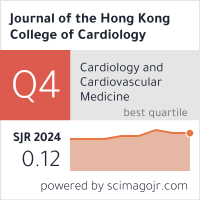Abstract
BACKGROUND: Myocardial strain is a good prognostic factor independent of ejection fraction for outcomes in heart failure. We evaluated the prognostic role of global longitudinal strain in acute myocardial infarction to identify the likelihood of in-hospital heart failure. METHODS: Forty participants with acute myocardial infarction were included, ranked according to Killip class, and classified into 2 groups: patients complicated by in-hospital heart failure (Killip class II — IV) on admission or during hospital stay (n = 16) and patients with no clinical evidence of in-hospital heart failure (Killip class I) on admission or during hospital stay (n = 24). All participants underwent reperfusion by percutaneous intervention or fibrinolytic therapy followed by transthoracic echocardiography within 72 hours of admission. RESULTS: There were statistically significant differences between both groups regarding the global longitudinal strain, ejection fraction and the wall motion score index. In patients with mildly reduced ejection fraction, there was a statistically significant difference between both groups regarding the global longitudinal strain and statistically non-significant differences regarding the ejection fraction and wall motion score index. Global longitudinal strain was the only echocardiographic parameter with statistically significant difference between Killip class I and class II. CONCLUSIONS: Global longitudinal strain was superior to ejection fraction and wall motion score index in detection of in-hospital heart failure in Killip class II and in evaluation of myocardial dysfunction in patients with mildly reduced ejection fraction. Global longitudinal strain could be considered as a part of the routine echocardiographic evaluation of acute myocardial infarction for detection of in-hospital heart failure and risk stratification of patients with acute myocardial infarction especially those with mildly reduced ejection fraction and those without overt heart failure (Killip class II).
Recommended Citation
Hassan Ebeid, Rania Abdelhady, Khaled Ahmed Elkhashab, Mohamed Osama Hussein, Haytham Soliman Ghareeb, Global longitudinal strain in acute myocardial infarction and incidence of in-hospital heart failure. Journal of the Hong Kong College of Cardiology 2022;29(1):13-17 https://doi.org/10.55503/2790-6744.1077
Creative Commons License

This work is licensed under a Creative Commons Attribution-Noncommercial-No Derivative Works 4.0 License.



